
| Summary : |
![]()
Methodology of test:
AMD-platform (1/2)
Finally we have chosen an extremely powerful method to cool down the NorthBridge. All classical methods with a cooling fan where rejected and we adopted one using water-cooling. This method has proven his reliability and therefore is becoming more popular in high-performance environments. In theory the principle is very simple. You take a cooling element and with a pumping system you make circulating water through this element in order to keep an optimized operational temperature. But practically you will not get the temperature bellow the room temperature, unless you use the TEC effect or also known as the "Peltier principle". This Peltier-plate has the particularity to offer one hot surface and one refrigerating surface, for more information regarding this system you can check here. In our case we used the refrigerating side, which allows temperatures of -30°C, which should be sufficient to cool down the KT266A chipset. The hot side would be cooled with water-cooling. Let's take a look at those elements.
First of all the Water-Block used here was specially developed to allow
to cool the Peltier-plate with water:
 |
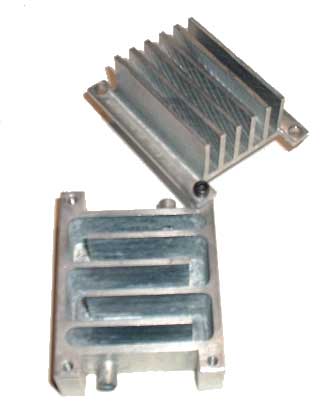 |
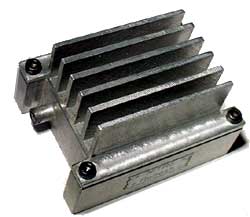 |
This model of Water-Block is a so-called " NiTRo Refresh ",
this is a high-precision fully handmade cooler, inside you can see the
water-circuitry offering optimized cooling performance to the Water-Block.
Let's take a close look at the element we have to cool down and the thermo
paste used to realize the assembly between the chipset, the Peltier element
and the Water-Block.
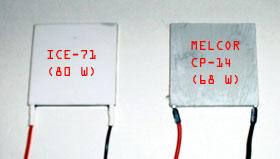 |
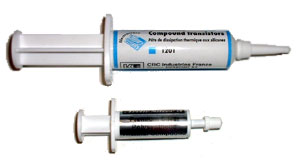 |
Here we have chosen the Melcor because we don't need a large element and,
more important, we don't want the element to start to condensate, which
could affect and harm the other components or potentially destruct the
motherboard. The Peltier element will have a dedicated power supply of
7 Volt. Regarding the thermo paste, we have chosen the famous " Artic
Silver 3 " on Silver bases for maximum conductivity,
Take a look how the assembly looks like:
 Epox 8KHA+ with the chipset cooler removed |
 Installation of the Peltier |
After this you can put the Water-Block on the Peltier, and the cooling
fan on the Athlon XP/MP :

After this you have to install the large Enermax fan on the CPU-cooler, add the Graphic card and of course the Kingmax DDR400 :
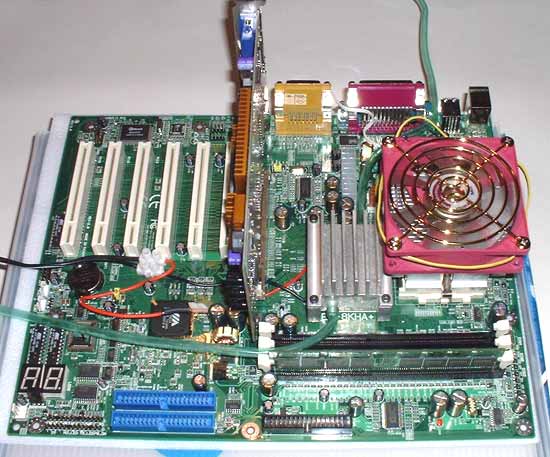 |
 The cooling system including the water tank |
After you checked and verified everything, especially the water circuit that might not leak, you can power-on the electrical circuits. In our case everything went fine.
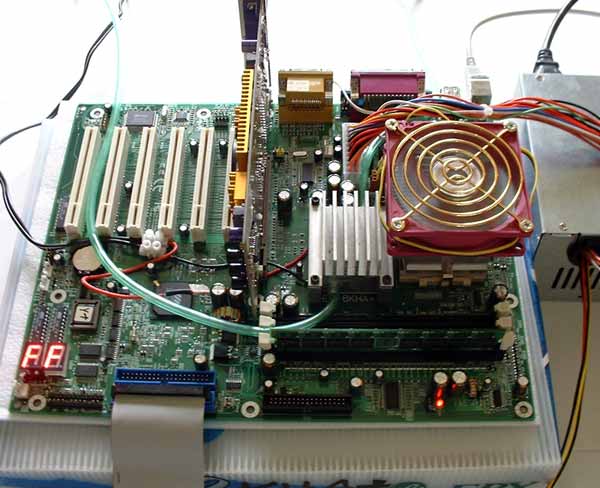
After a few tests we measured after stabilizing the temperature, a temperature
of approximately 3°C at the chipset with a room temperature of 22°C.
At system boot no problem occurred there were previously the system refused
to start without the use of a Peltier based cooling system.

 |
 |
Under Windows, here two Screen Shots with Wcpuid and CPU-Z :
 |
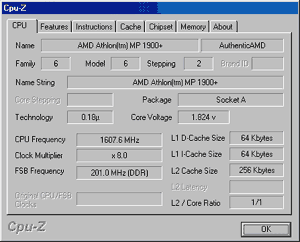 |
|
In other words, the Kingmax DDR400 realized all its promises without
any difficulty, so we tried to increase the FSB to its maximum frequency.
We achieved to run stable at DDR433. At DDR450 with 225MHz FSB our
test platform crashed immediately, we where not able to determine
which element was responsible for this failure. |
Let's see the results at those frequencies :
